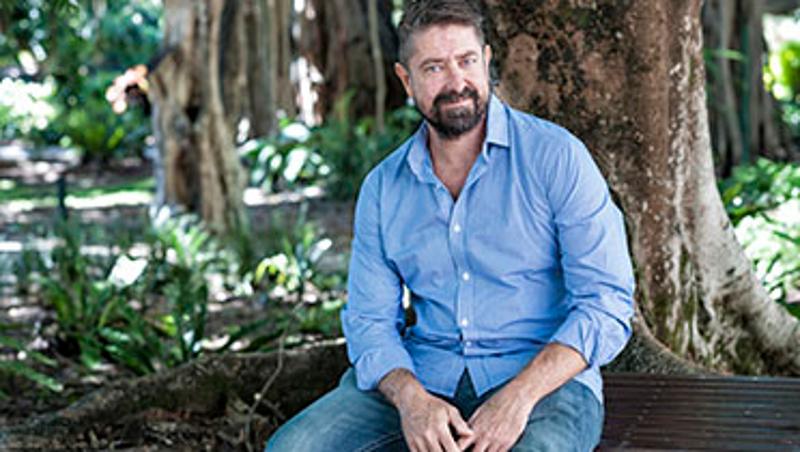
QUT scientists have begun a world-first study using unmanned aircraft (UA) to determine the impact the spread of the fungus Myrtle Rust will have on Australian native animals as well as the environmental conditions that encourage the pest to spread.
Research leader Dr Grant Hamilton, an invasive species specialist, said Myrtle Rust attacks plants in the Myrtaceae family which includes eucalypts, tea-trees, bottlebrushes and lillipillies.
He said while the spread of Myrtle Rust now stretched along coastal areas of northern New South Wales and Queensland it had been detected in Brisbane, as far west as Toowoomba, on the Atherton Tableland in far north Queensland, as well as in Melbourne and more recently had spread to South Africa and New Caledonia.
“While the spread of the fungus is being tracked little is known about its flow-on impacts on native animals,” Dr Hamilton said.
“Many iconic Australian birds, such as scaly-breasted lorikeets, as well as grey headed flying foxes rely on the fruits and flowers of plant species that are now or we expect will be affected by the disease.
“The fungus attacks new leaves and shoots, so in some plant species seedlings are particularly affected. In some plants Myrtle Rust also attacks the flowers and in others their soft fruits.
“It’s these new shoots, fruits and flowers that are so important to the diet of a range of our native animals.
“We need to determine the impact this potential lack of food supply will have on our native fauna so we can better manage our birds and other species in the long term.”
Dr Hamilton said his team was working with UAs and using mathematics to detect the spread of the fungus in affected areas and native vegetation near Caloundra was the first in a series of areas stretching into New South Wales that would be investigated.
“The imagery collected on board our UA is put through a computation process that involves complex algorithms that enables us to pinpoint Myrtle Rust,” he said.
“Previously, we have only been able to detect the spread of Myrtle Rust by taking photographs from the ground, but using UA will open up the potential for wide scale and detailed mapping of affected areas.
“We also use acoustics sensors to assess the presence and activity of animals within those affected areas.
“Myrtle Rust can show up as just a few yellow dots on a leaf and UA enable us to get close enough to photograph the top surface of the leaf, unlike conventional aircraft.”
He said researchers had also been using environmental monitors to record temperature and humidity and assessing rainfall in the test area.
"An analysis of the data obtained from both the acoustic and humidity monitors as well as the vision from the UAs would give the first real evidence of both the conditions that promoted fungus growth as well as the impact this had on native fauna.
"It may be that the impacts are not felt for some time after a Myrtle Rust outbreak occurs, or it may be that the effects are cumulative," he said.
Dr Hamilton said over time the research would investigate any potential domino effect Myrtle Rust had on changes to ecosystems.
“We don’t know whether affected birds and bats will reduce in number because of the impact of Myrtle Rust, whether it’s possible for them to modify their diet and eat other non-affected plant species or whether they will move further afield,” he said.
“No-one knows the impact Myrtle Rust is and will have on native fauna, and that’s why we’re doing this study.”
The study will run for two years.
Media contact: Rose Trapnell, QUT media team leader, 07 3138 2361 or 0407 585 901 rose.trapnell@qut.edu.au




